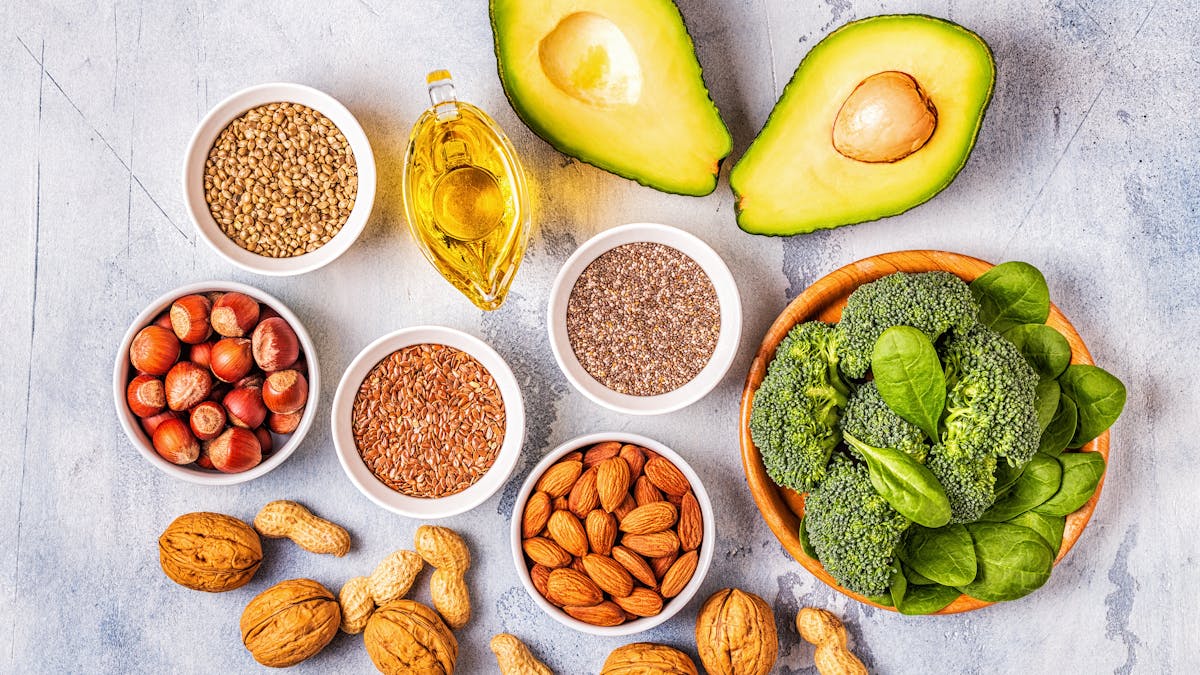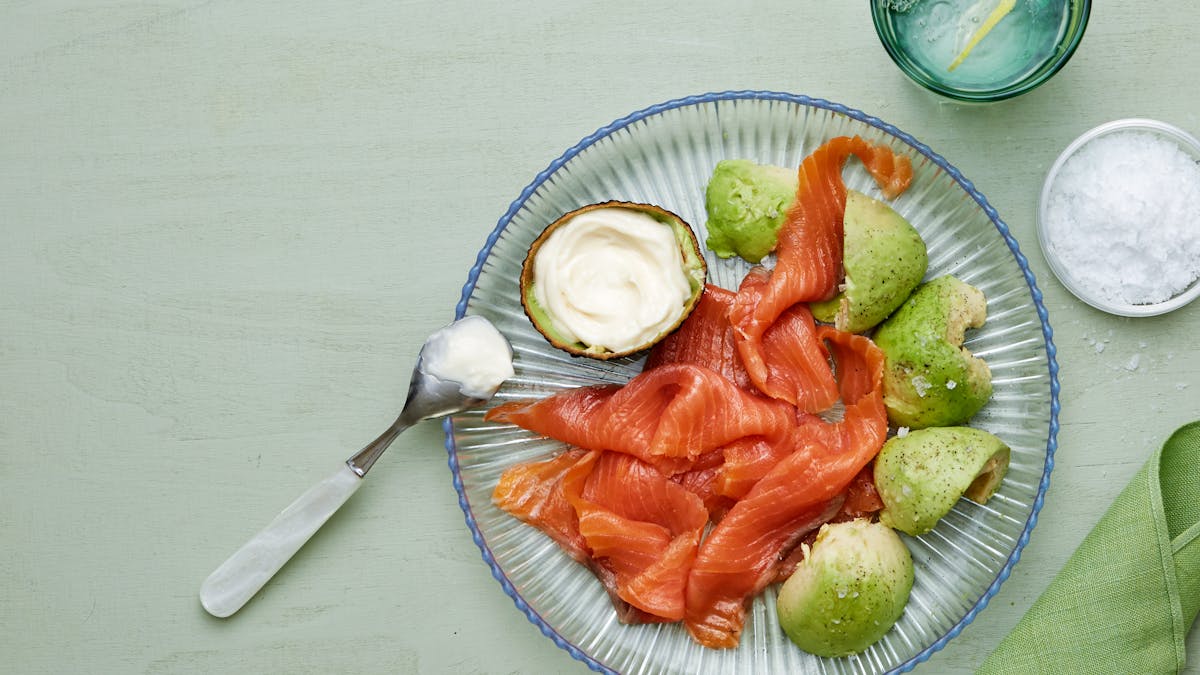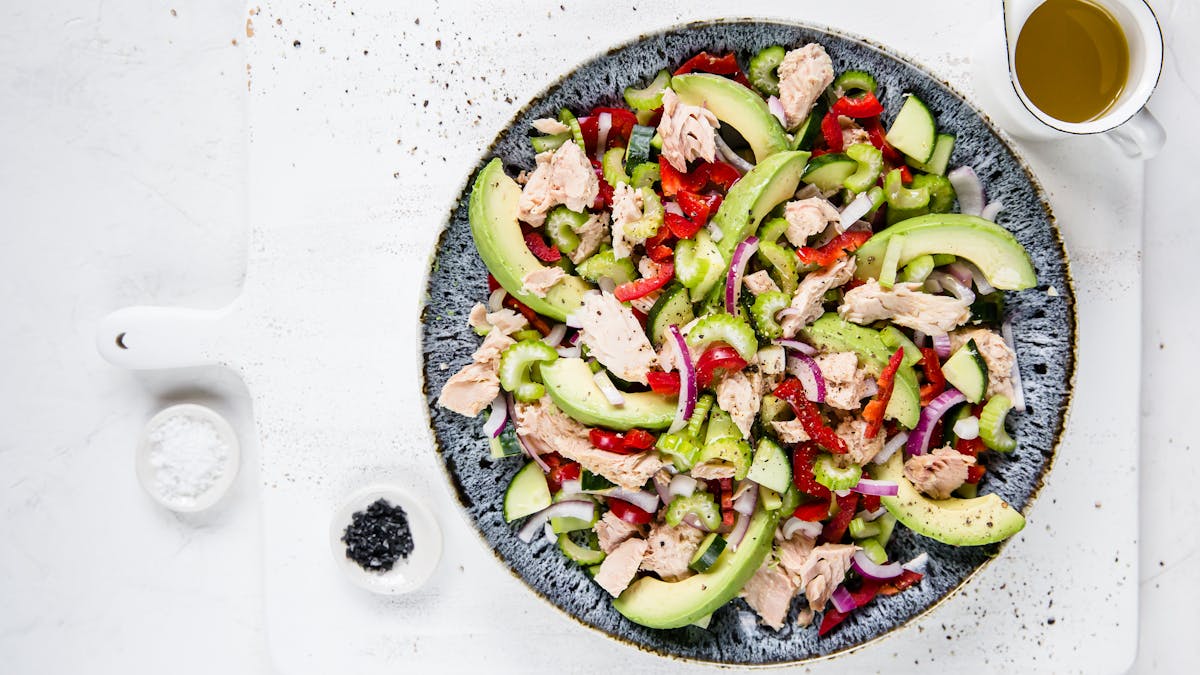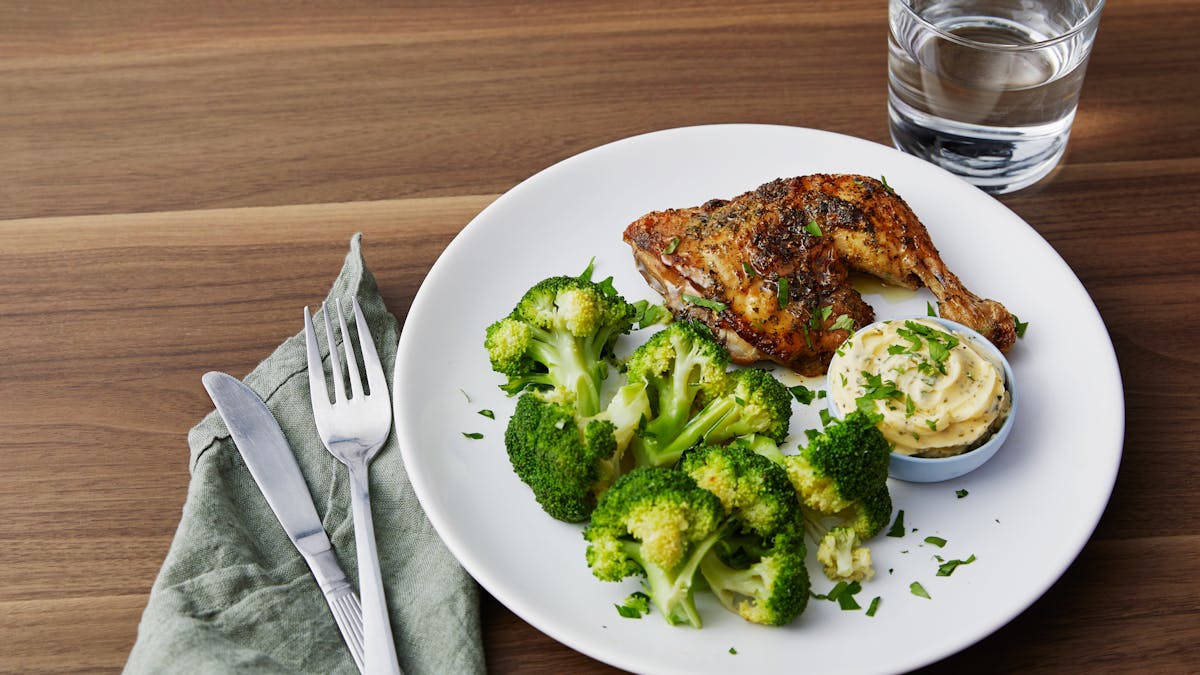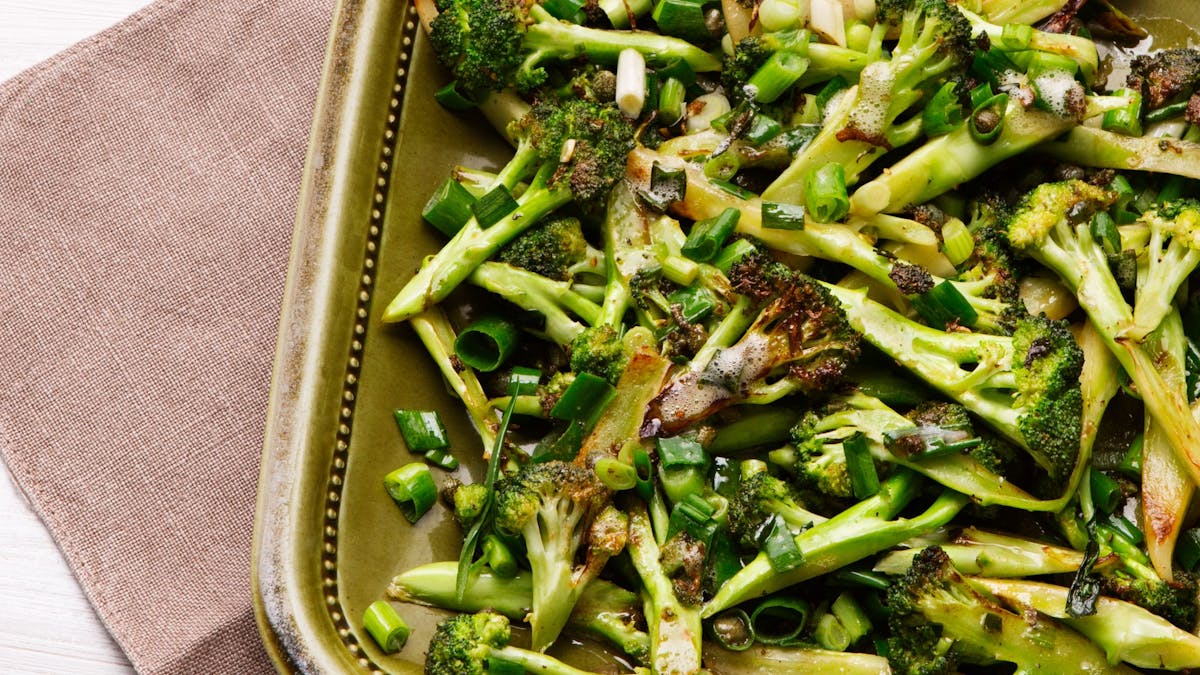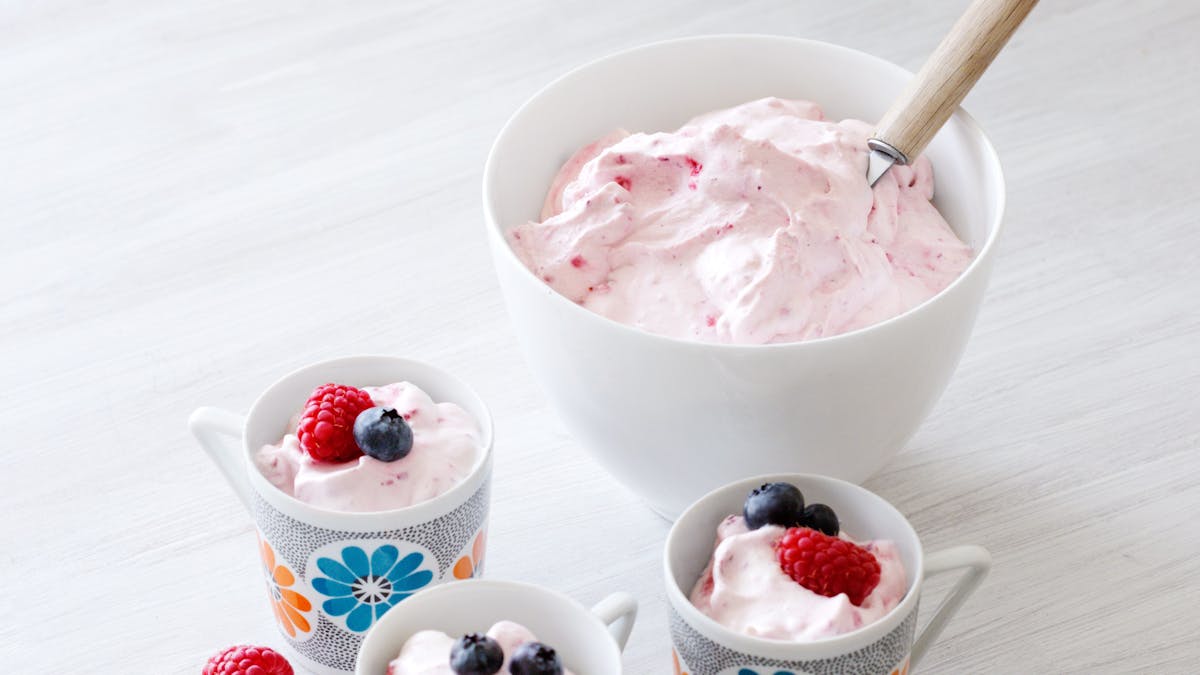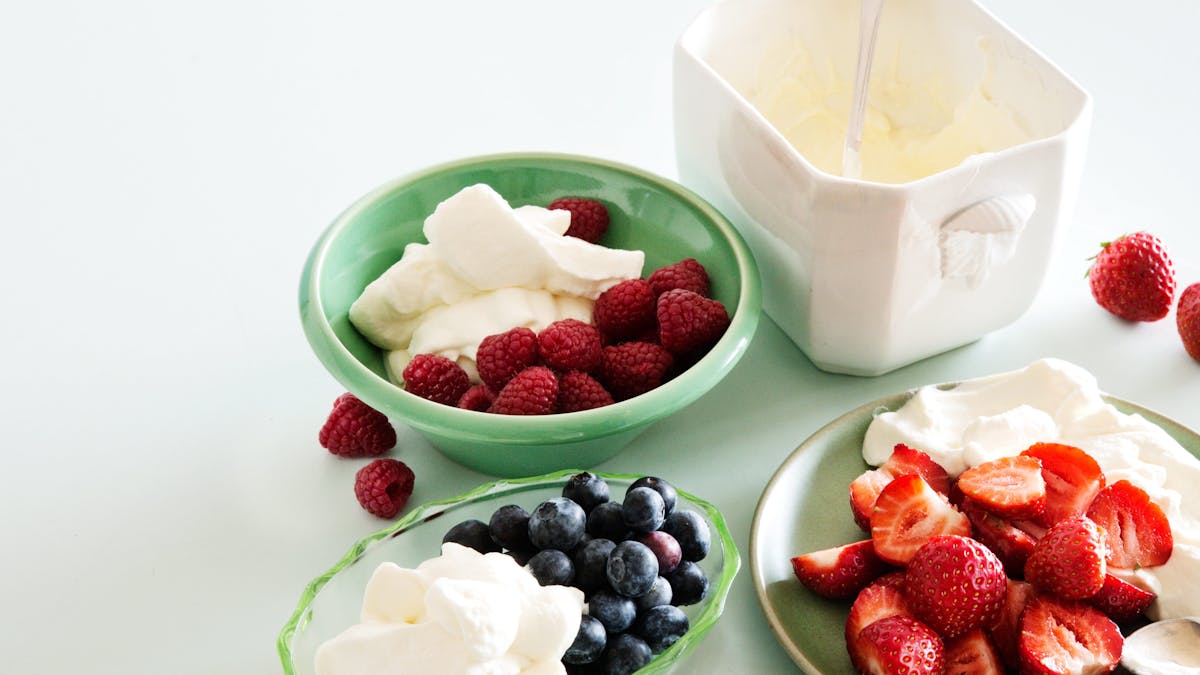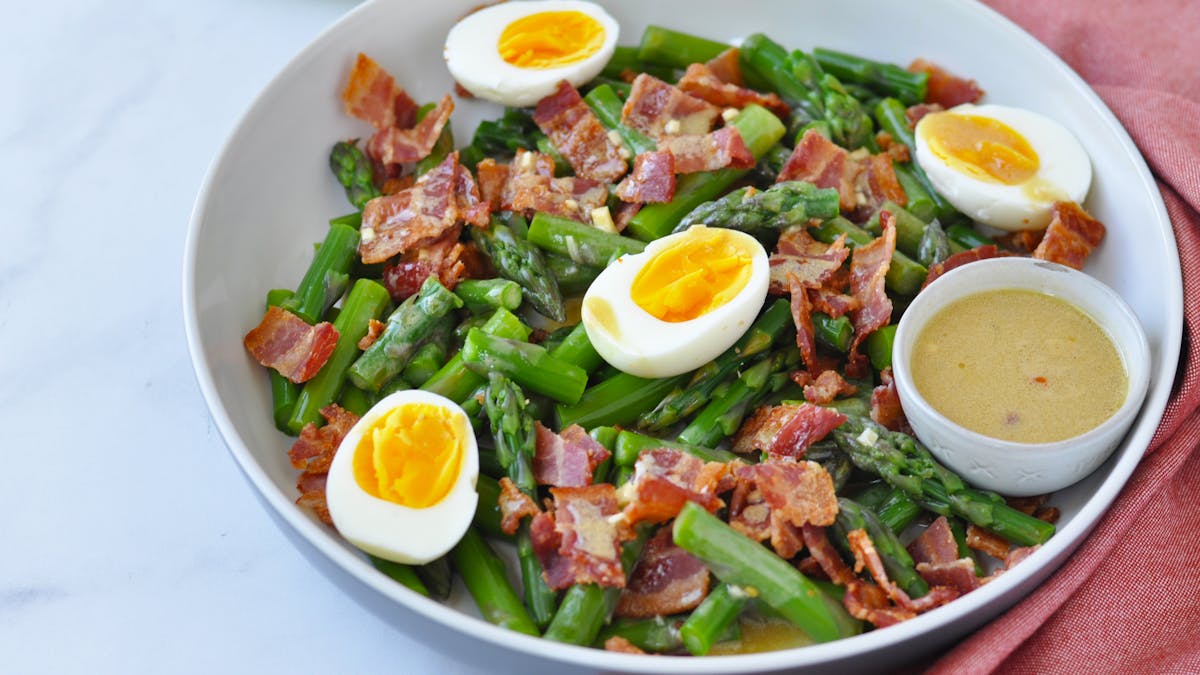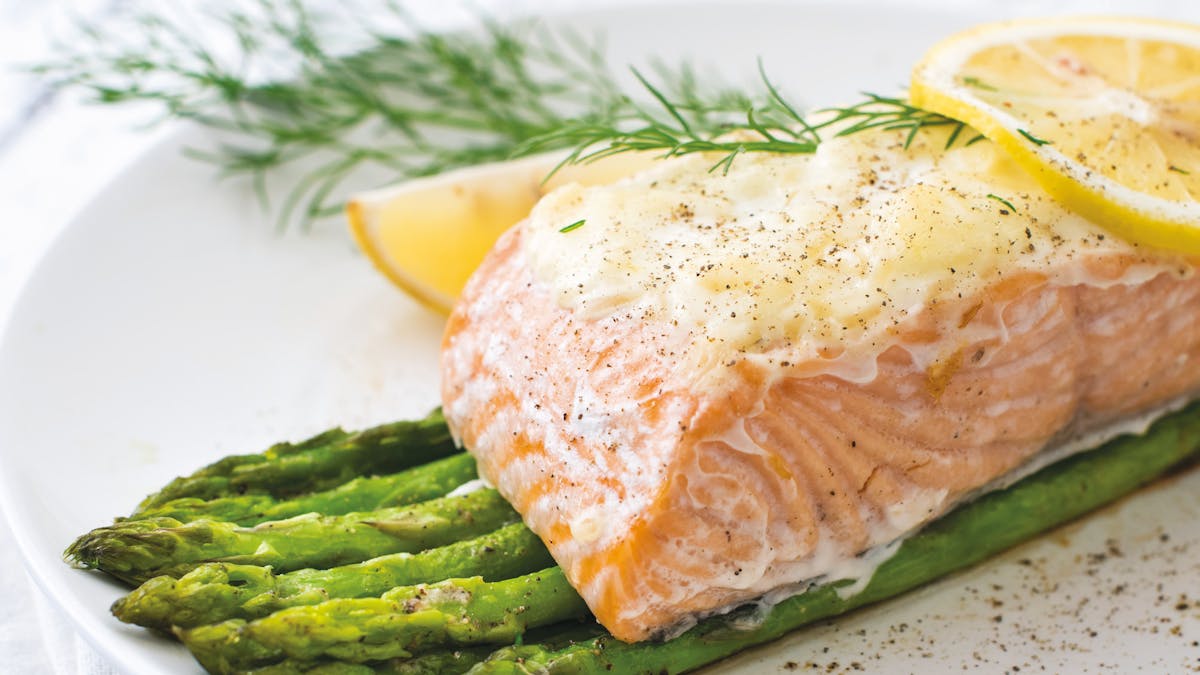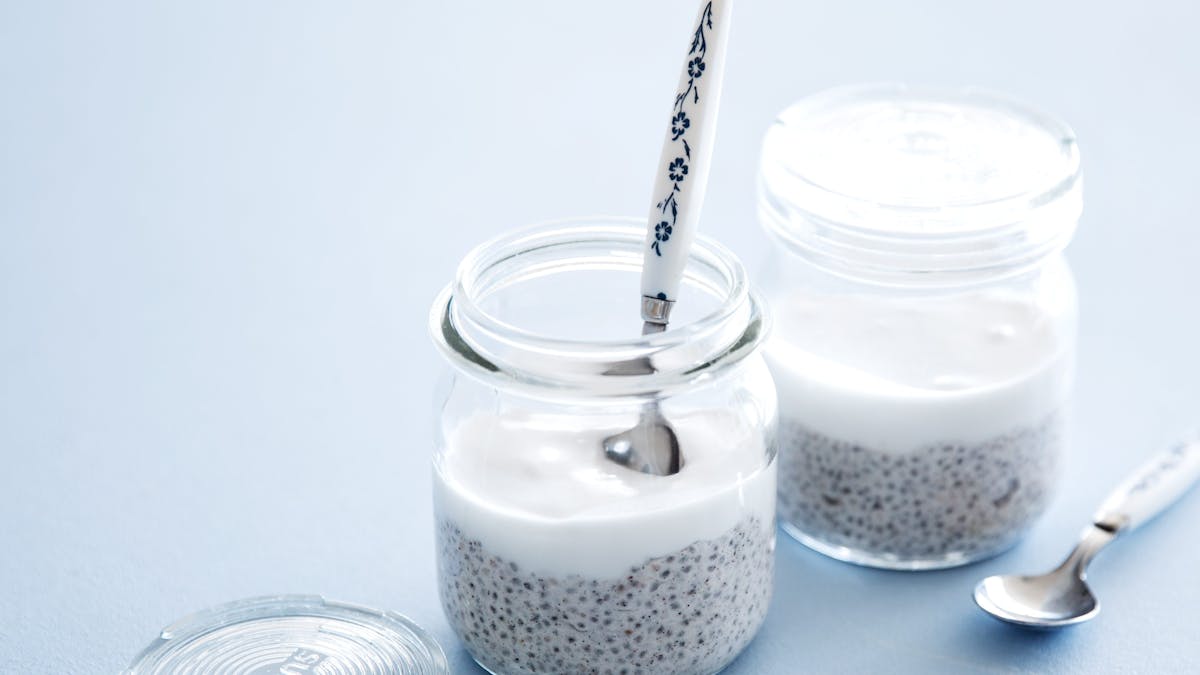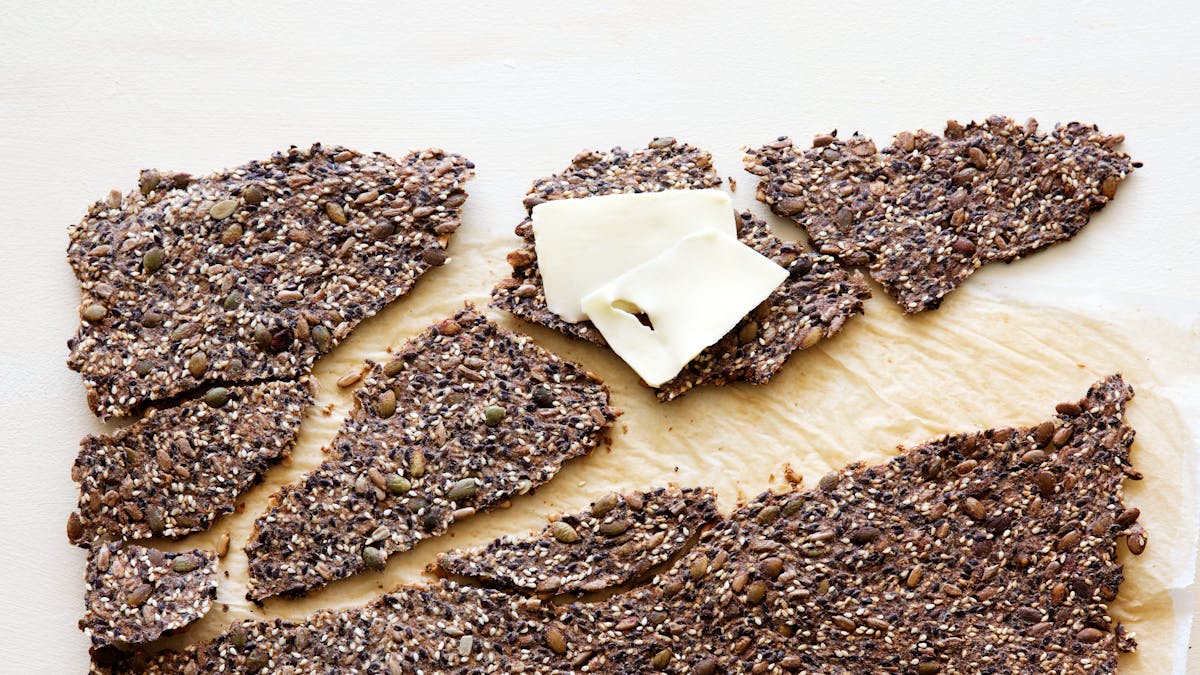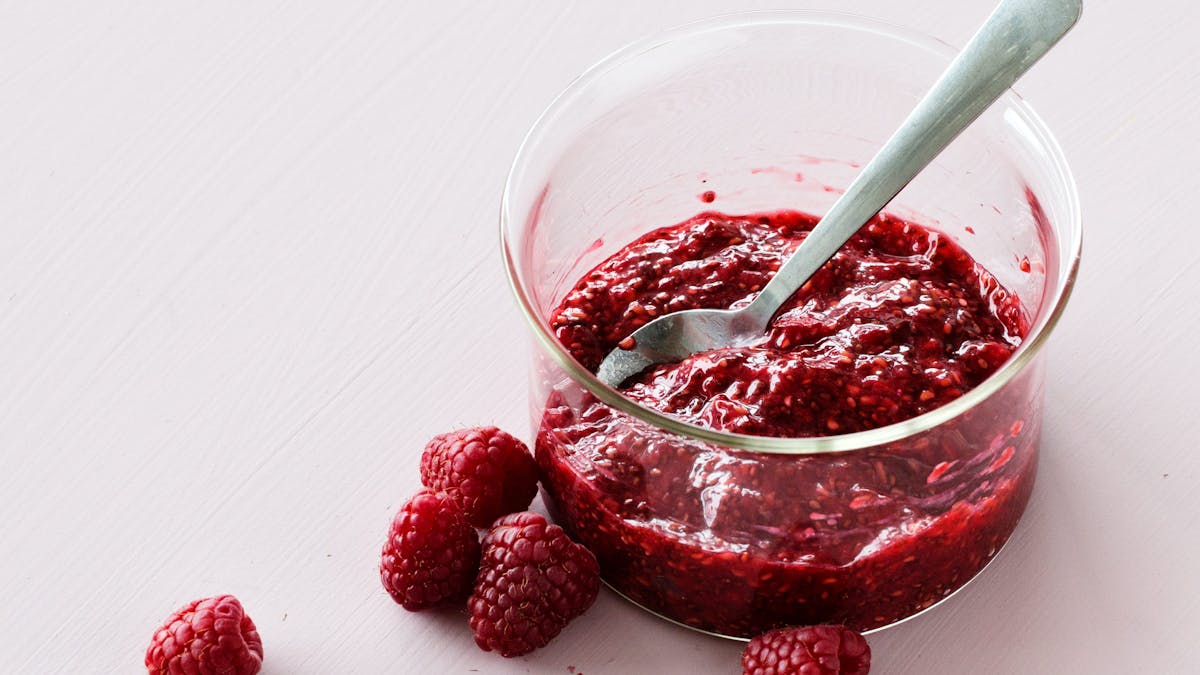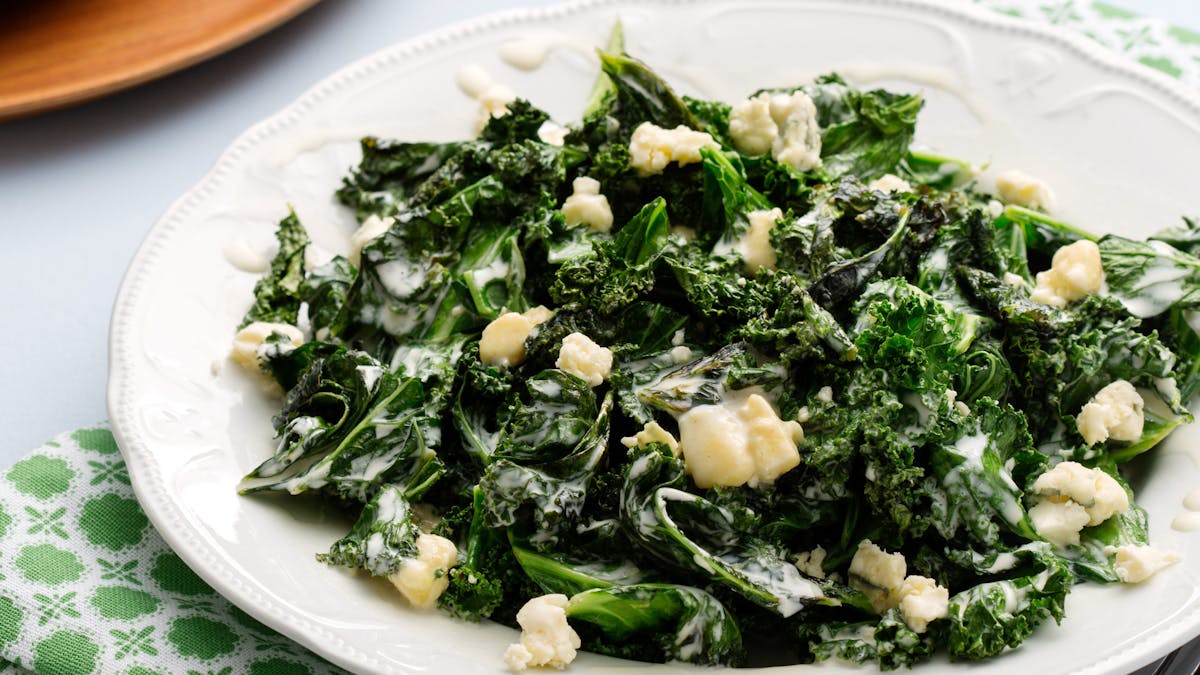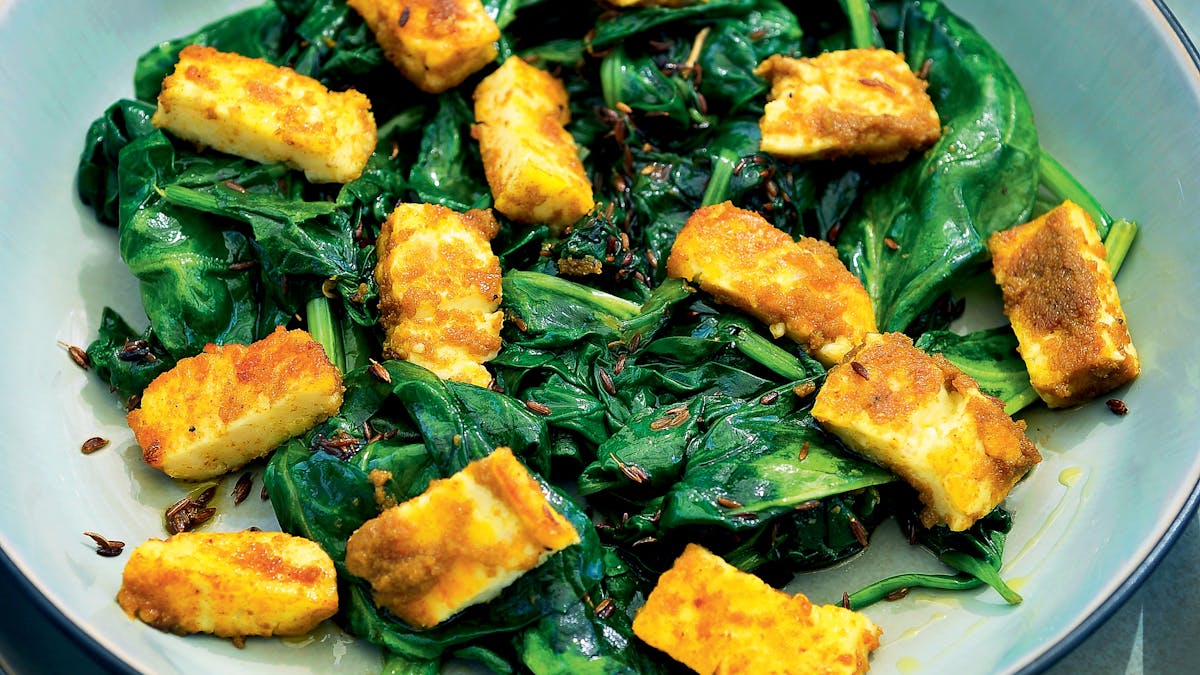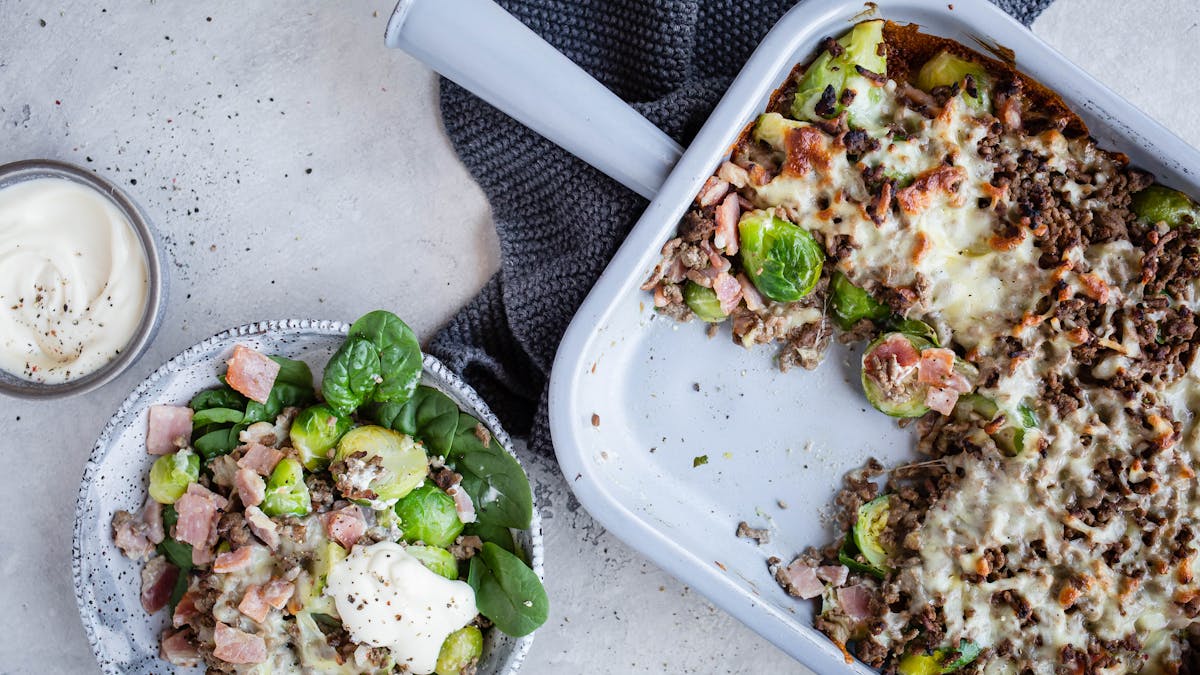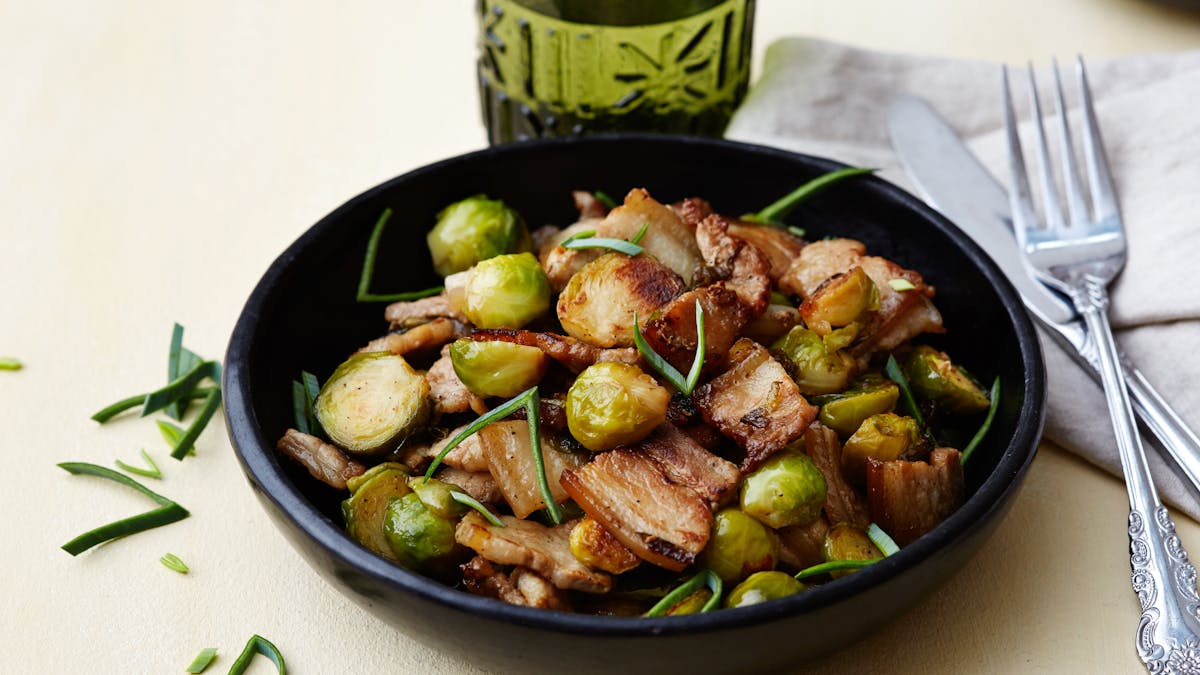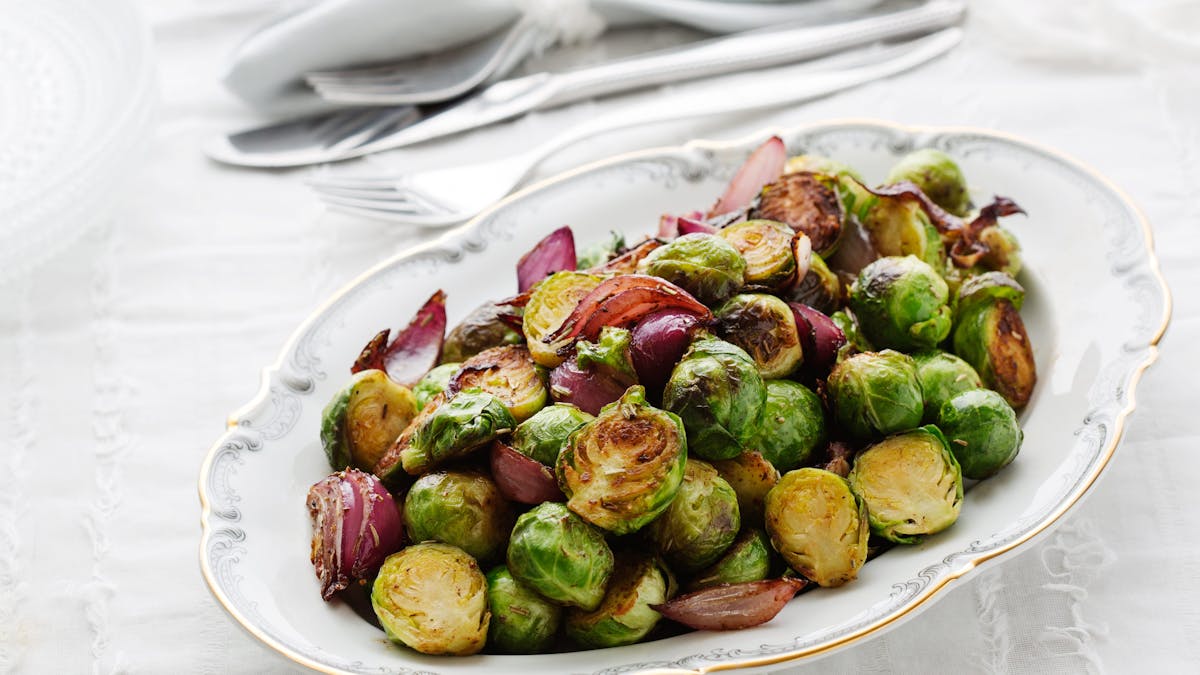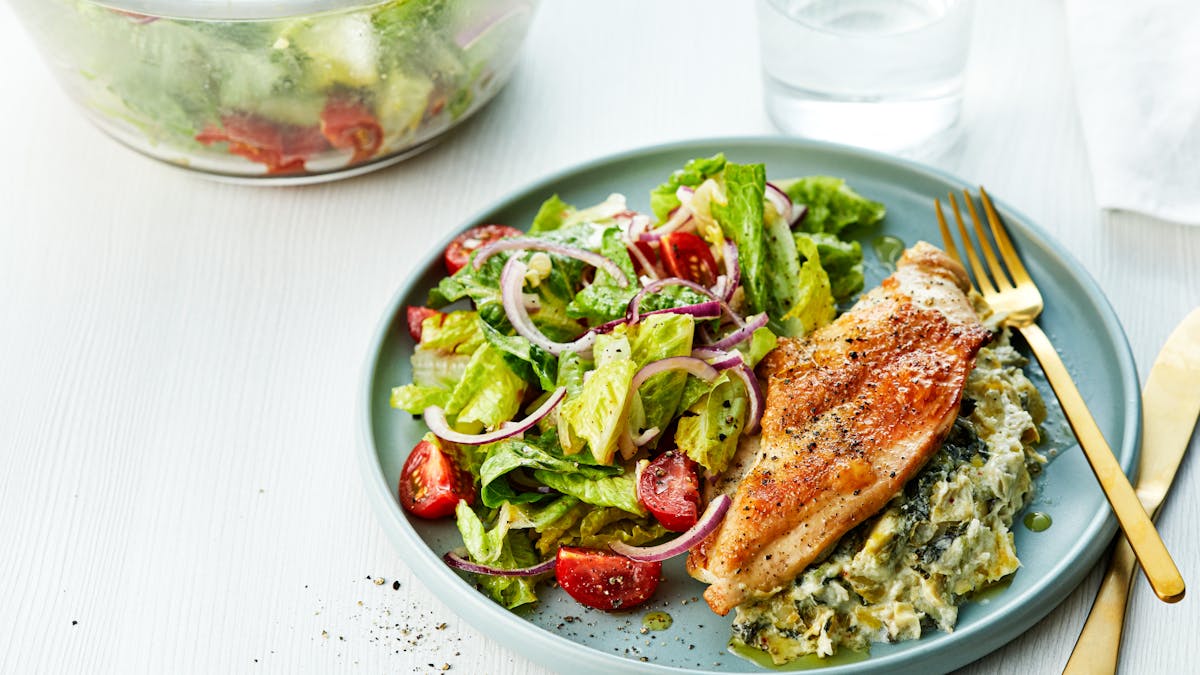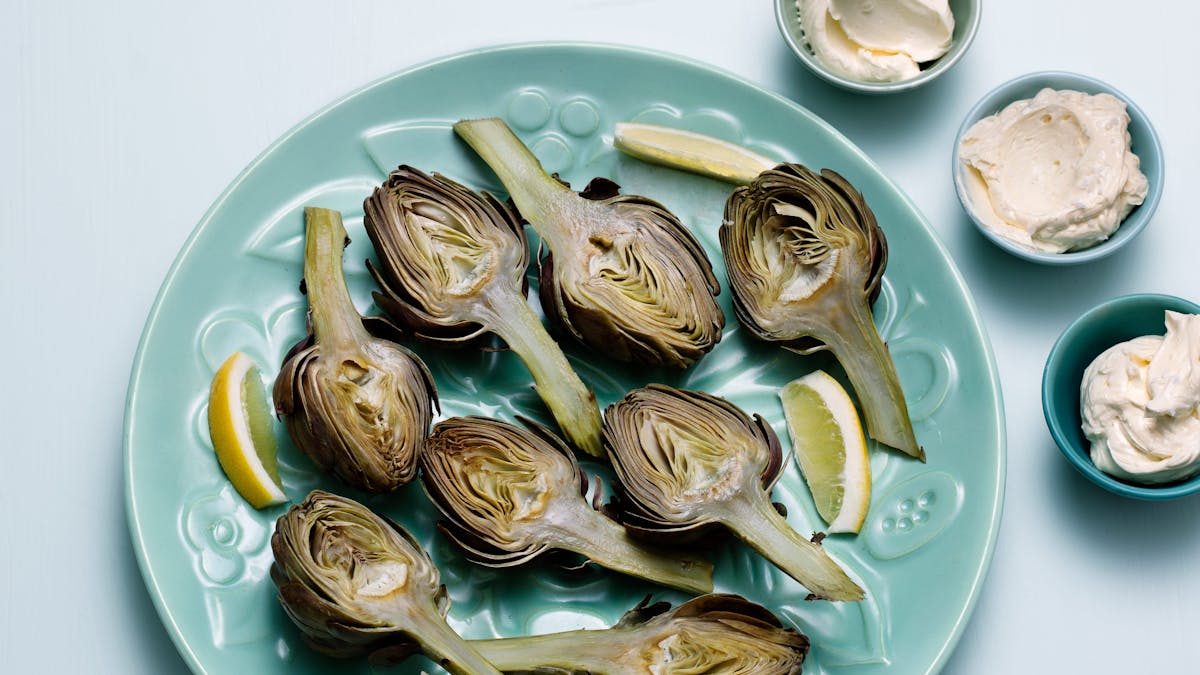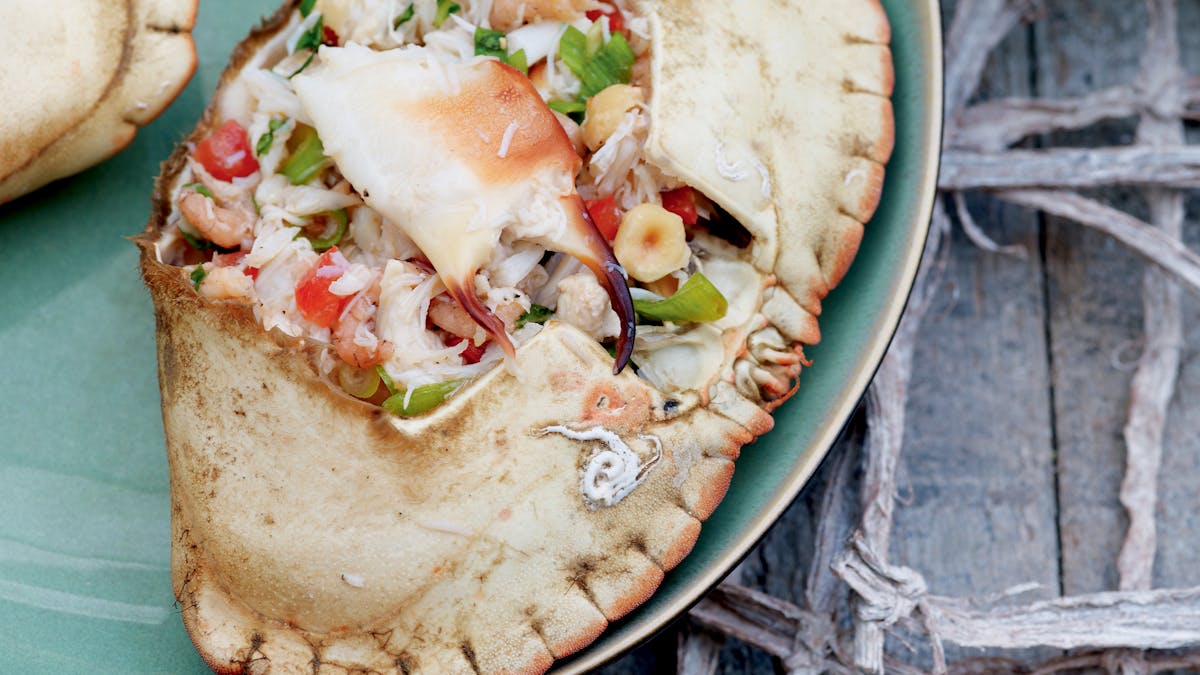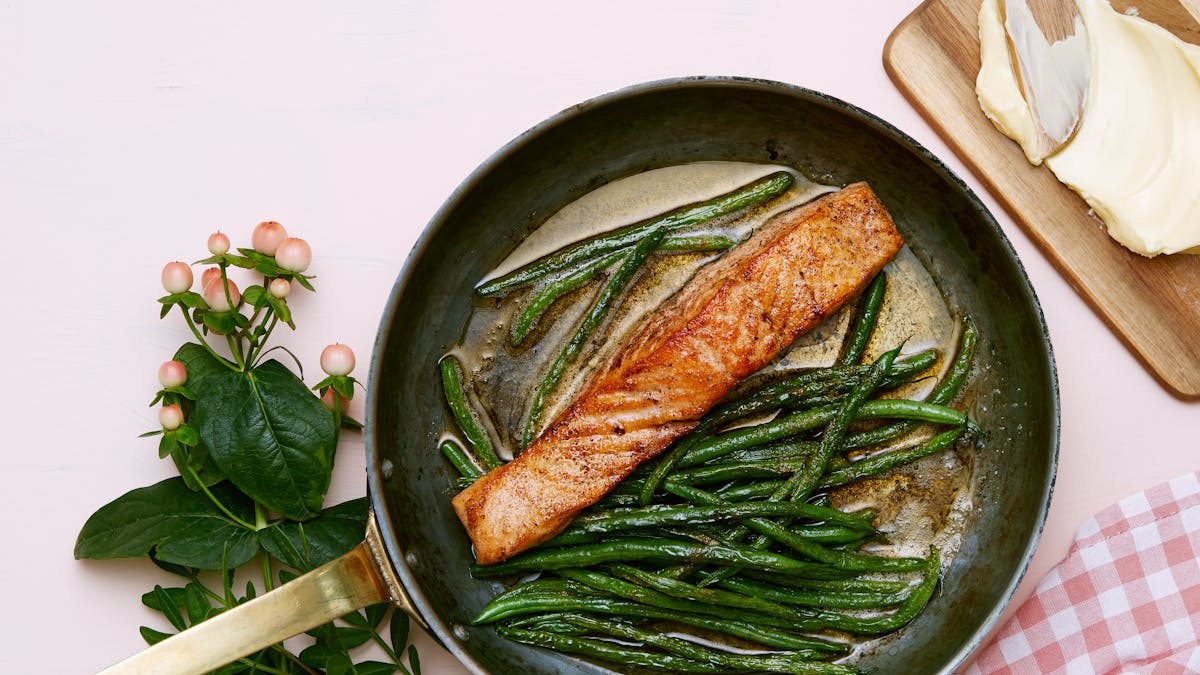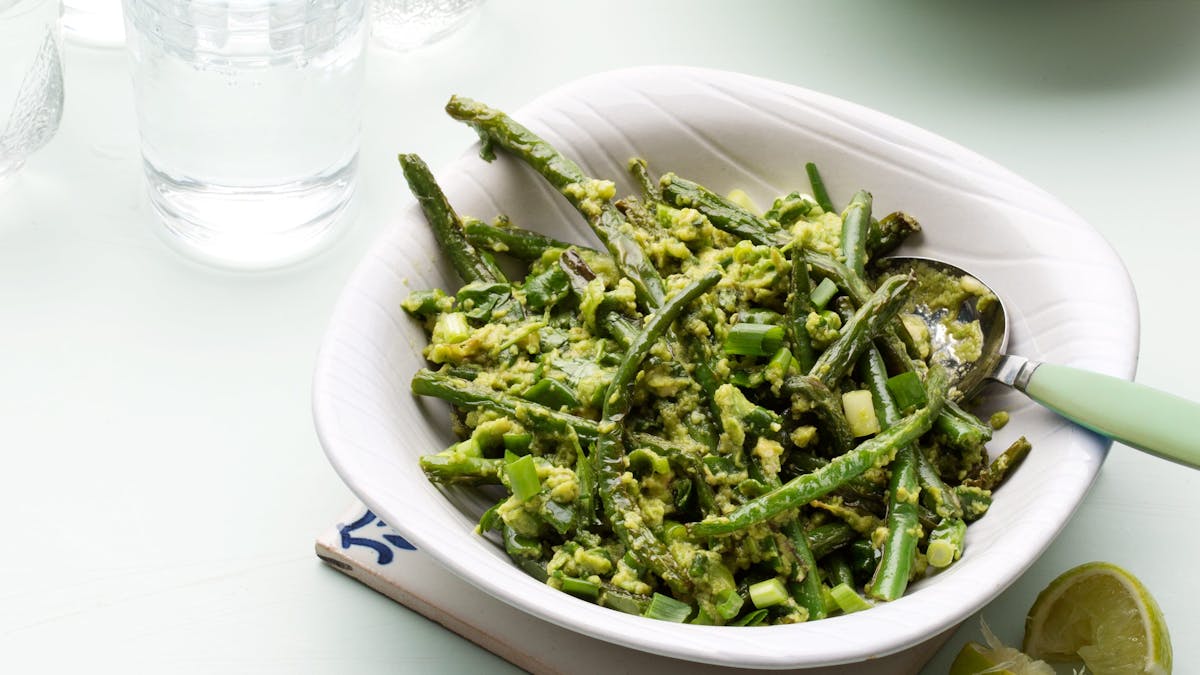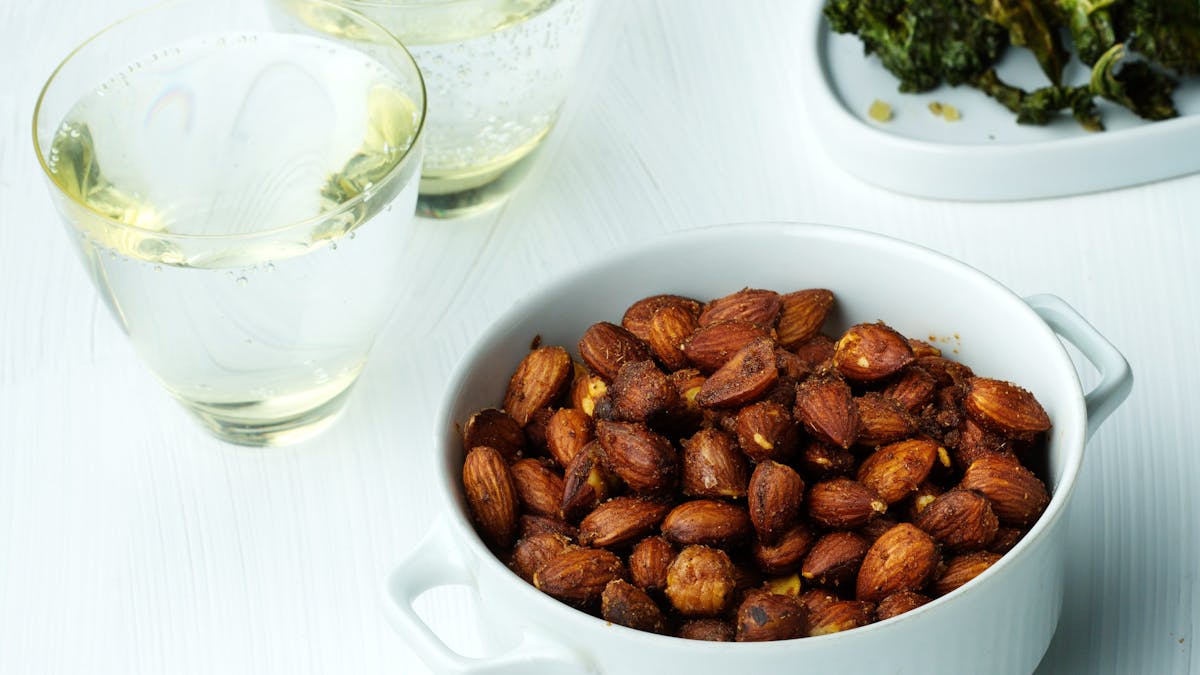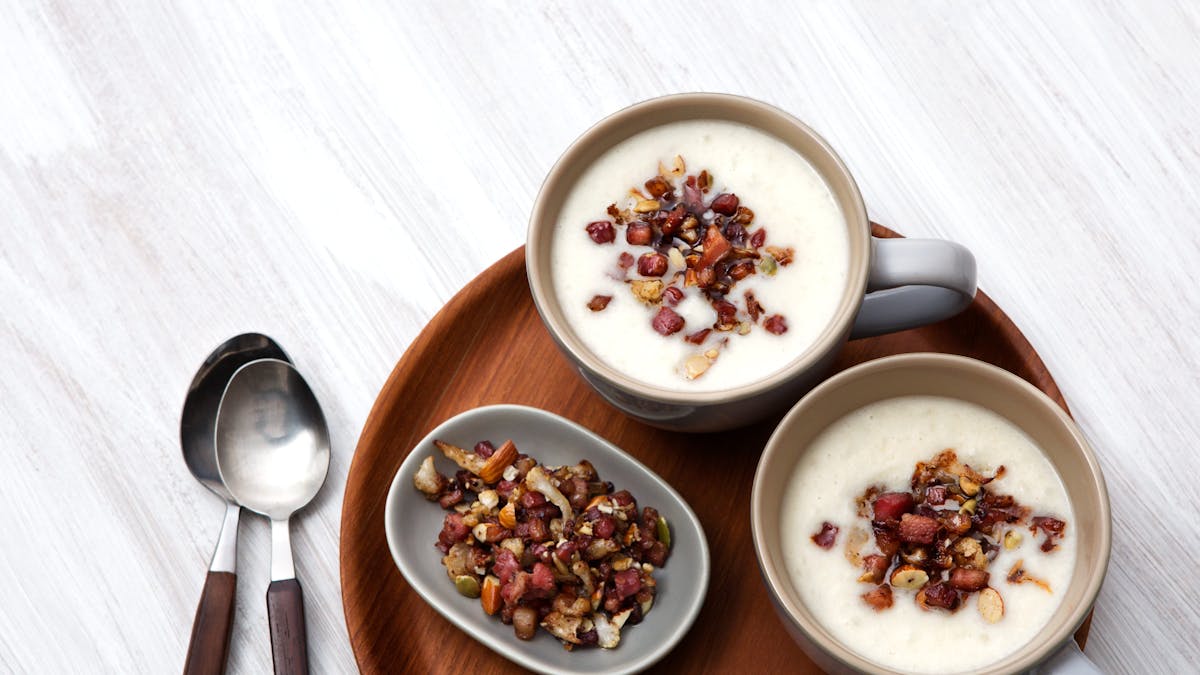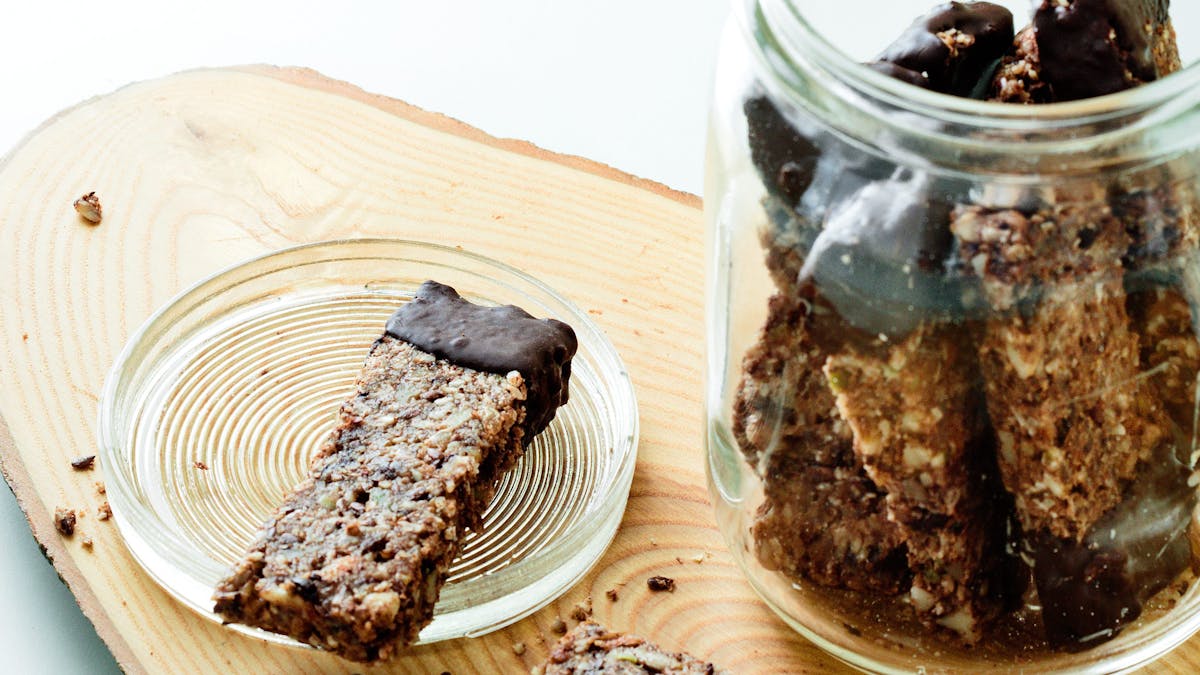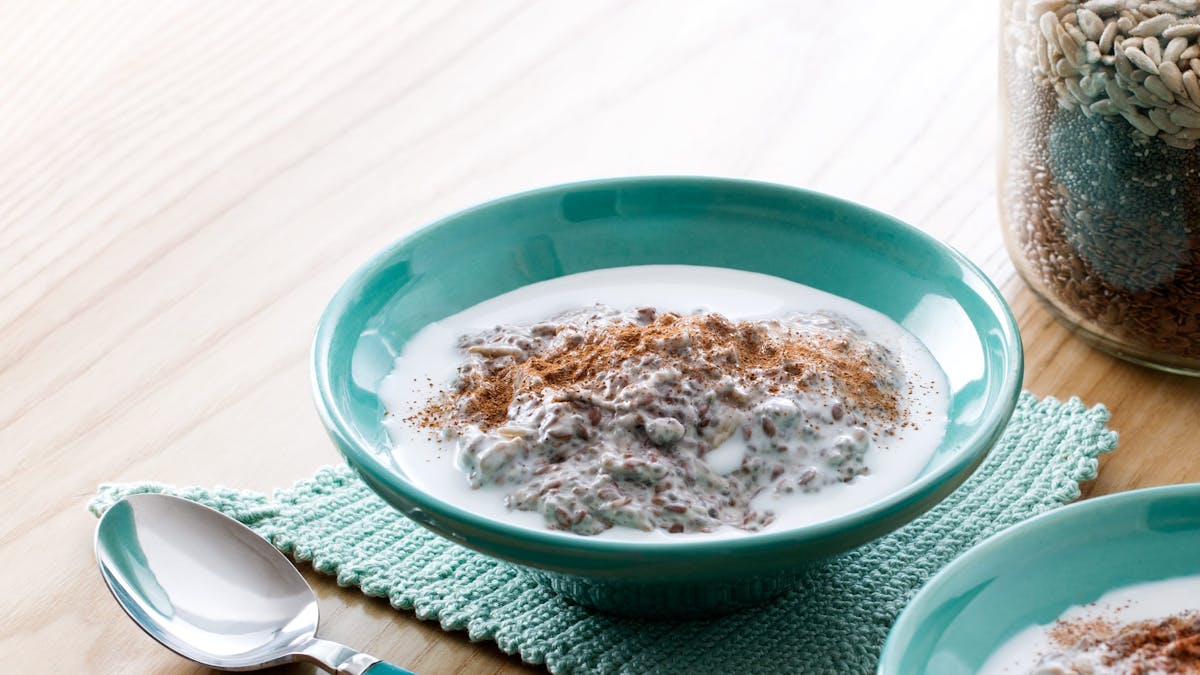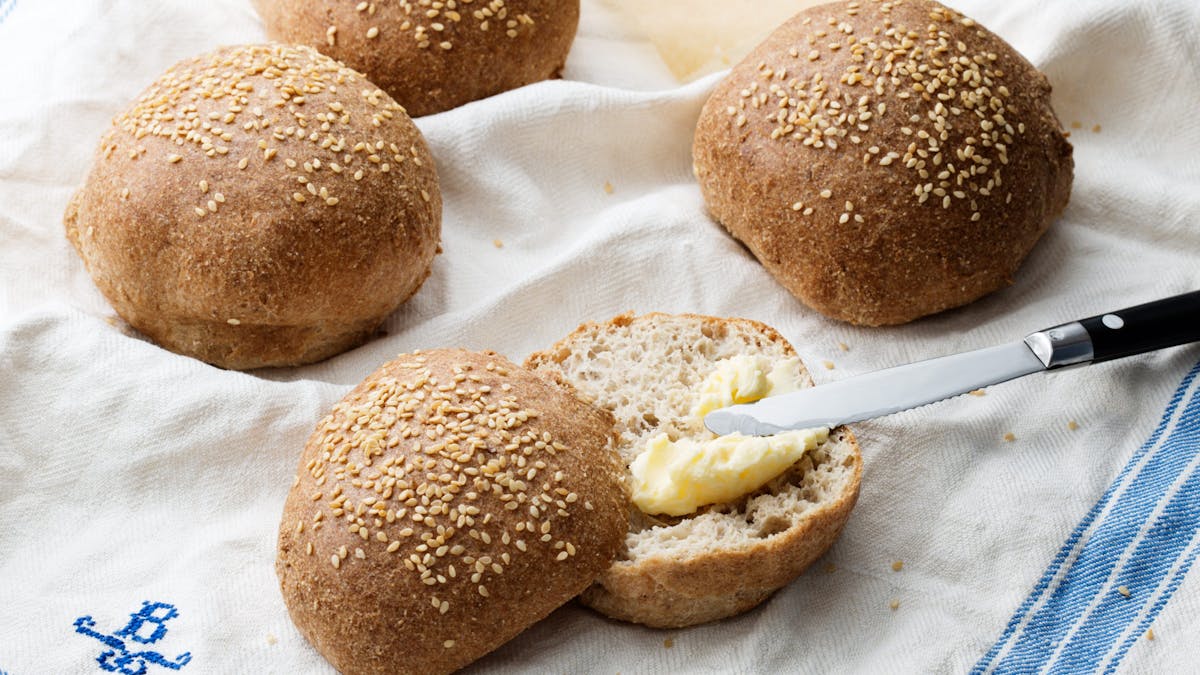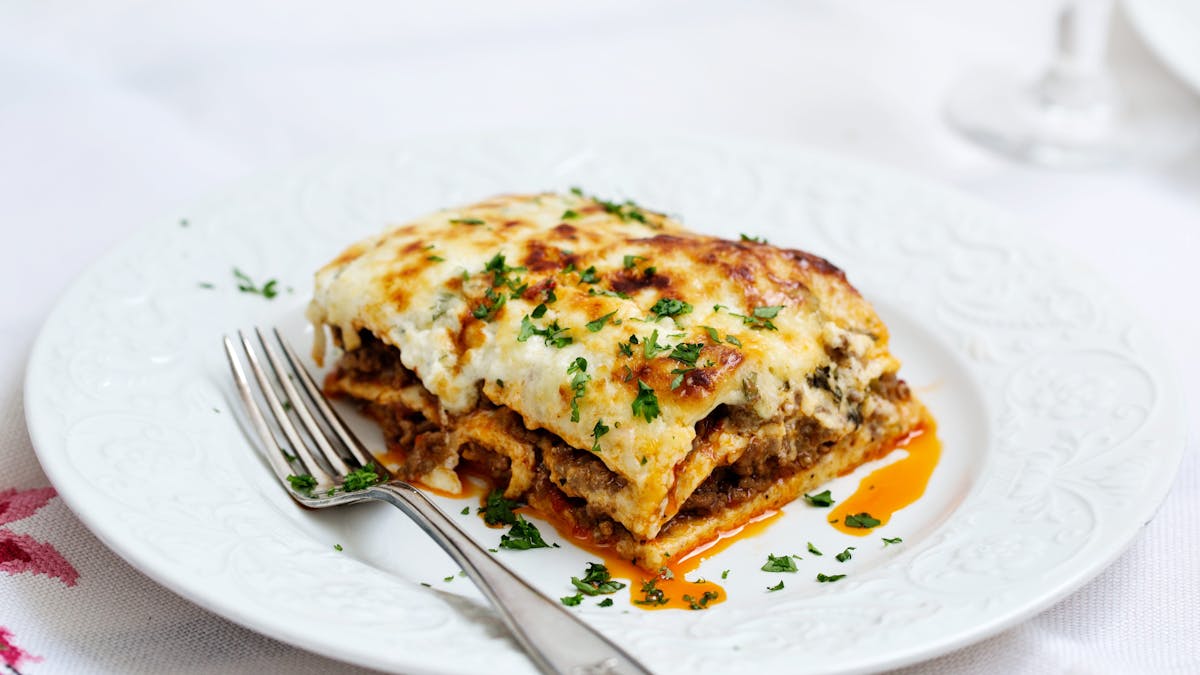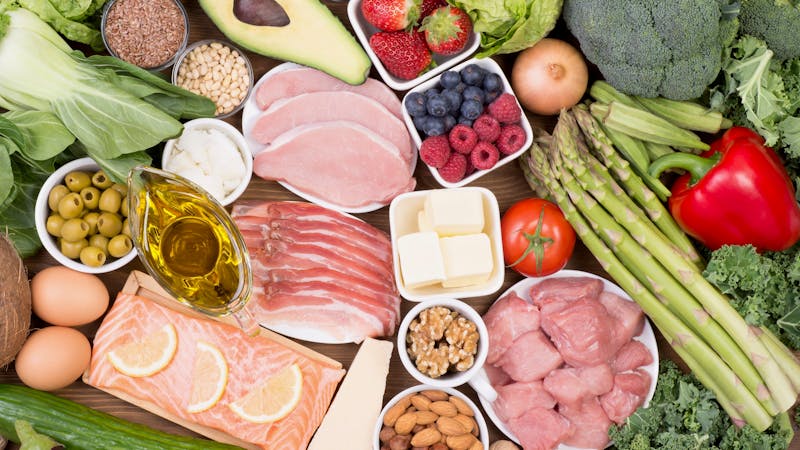15 high-fiber foods that are low in carbs
You’ve probably heard about the impressive health benefits of fiber. Weight loss. Feeling full with greater satiety. Even better blood sugar control. Although it isn’t universal, for many, these benefits are real.
Unfortunately, many foods that are high in fiber are also high in carbs. How can you boost your fiber intake while staying keto or low carb? In this guide, we’ll share the best low-carb, high-fiber foods.

What is fiber, and why can it be beneficial?
Dietary fiber is the portion of plant foods sometimes referred to as “roughage.” Unlike other carbohydrates, fiber isn’t broken down and absorbed by your digestive tract.1 Instead, fiber passes through your system until it reaches your colon, where it is either fermented by bacteria or eliminated in feces, depending on the type.2
Vegetables and other plant foods contain a combination of soluble and insoluble fiber.3 Colonic bacteria ferment soluble fiber, while insoluble fiber passes through untouched, helping bulk up stools and making them easier to pass.
Although it’s promoted for helping to relieve constipation, fiber has been found to play several other roles in good health, including the following.4
- Better diabetes control: Soluble fiber can help lower blood sugar in people with type 2 diabetes.5
- Lower LDL cholesterol levels: According to clinical trials, both soluble and insoluble fiber may help modestly reduce LDL cholesterol.6
- Relief from irritable bowel syndrome: Although insoluble fiber bulks up stool, soluble fiber seems to be more beneficial for irritable bowel syndrome.7
- Potential weight loss: Fiber may help you feel full and absorb fewer calories from mixed meals.8
The US Food and Nutrition Board recommends a minimum daily fiber intake of 25 grams for women and 38 grams per day for men, based on research connecting higher fiber intake with better health.9
However, these recommendations are based mostly on observational studies in populations eating mixed diets or low-fat diets. We do not have specific information for those following low-carb diets.10
Top 15 high-fiber, low-carb foods
How can you get the benefits of fiber while staying keto or low carb? Choose from our list of 15 keto-friendly, high-fiber foods, which includes the amount of fiber and net carbs (total carbs minus fiber) per serving.11
1. Avocado
Although it’s often grouped with vegetables, the avocado is technically a fruit. However, this fruit is high in fat, with a creamy texture and mild flavor that’s neither sweet nor sour.
Studies have shown that including avocado at a meal can help you feel full and satisfied.12 Avocados may also improve some markers of heart health.13
What’s more, the avocado is higher in fiber and lower in net carbs than most fruits. One half of a large avocado (100 grams) provides 7 grams of fiber and 2 grams of net carbs.
Avocados are excellent in salads and omelets, as well as the star ingredient in guacamole.
Diet Doctor recipes featuring avocado:
2. Broccoli
Broccoli belongs to the family of cruciferous vegetables, which includes Brussels sprouts, cabbage, and cauliflower. Broccoli provides several important vitamins and minerals, such as vitamin C and potassium. Limited research suggests it may potentially help reduce markers of inflammation.14
In addition, it’s a good source of fiber. One cup (150 grams) of chopped, cooked broccoli contains 5 grams of fiber and 6 grams of net carbs.
Broccoli is especially tasty when sauteed in butter or roasted in olive oil. When dining out, ask your server to replace potatoes, rice, or other starch with steamed broccoli and butter.
Diet Doctor recipes featuring broccoli:
3. Blackberries and raspberries
Fruit usually isn’t a great fit for a ketogenic diet because most types are high in carbs. Berries are a delicious exception that can be enjoyed in small amounts occasionally, even on a strict keto diet.
Which kinds are highest in fiber? Blackberries and raspberries, which are also the berries lowest in net carbs.
Raspberries provide 6.5 grams of fiber and 5 grams of net carbs per two-thirds cup (100-gram) serving, and blackberries follow closely behind with 5 grams of fiber and 5 grams of net carbs for the same serving size.
Berries with fresh cream are a simple yet elegant dessert. Frozen berries can be a good option if fresh aren’t available.15
Diet Doctor recipes featuring blackberries or raspberries:
4. Asparagus
Asparagus is a popular vegetable with a delicate taste and texture. It’s also filling and a good source of the B vitamins and vitamin C.
Eight large spears (160 grams) of asparagus have 3 grams of fiber and 3 grams of net carbs.
Asparagus is best when paired with a rich, creamy sauce, whether it’s served hot or cold.
Diet Doctor recipes featuring asparagus:
5. Chia seeds
Chia seeds are a unique seed that forms a gel when combined with liquid. Some studies suggest they may improve blood sugar levels and help you feel full.16
Chia seeds are an excellent keto-friendly source of fiber. Two tablespoons (28 grams) provide 10 grams of fiber and 2 grams of net carbs.
Stir the seeds into water or other liquid and let the mixture stand for a minimum of 15 minutes before consuming it. To improve the taste, add cocoa powder or vanilla with a keto sweetener, if desired.
Diet Doctor recipes featuring chia seeds:
6. Macadamia nuts
Macadamia nuts are a favorite among keto and low-carb enthusiasts. Although eating macadamias may feel indulgent, they’re a nutritious food that’s not only low carb but may help lower LDL cholesterol.17
Their fiber content is pretty impressive as well. A three-quarter cup (100-gram) serving has just under 9 grams of fiber and 5 grams of net carbs.
Macadamia nuts are a delicious portable snack that can be enjoyed anytime. For an occasional special treat, try our Keto chocolate macadamia nut fat bombs.
7. Leafy greens
Spinach, kale, and other leafy green vegetables are staples of most low-carb diets. In addition to being rich in nutrients and widely available, they may help you feel full.18
Whether you prefer your greens sauteed, creamed, or steamed, they’re a great way to boost your fiber intake while keeping carbs low:
- Spinach, cooked: 4 grams of fiber and 1 gram of net carbs per half cup (100 grams)
- Collard greens, cooked: 4 grams of fiber and 1.5 grams of net carbs per half cup (100 grams)
- Mustard greens, cooked: 2 grams of fiber and 2.5 grams of net carbs per half cup (100 grams)
- Kale, cooked: 2 grams of fiber and 3 grams of net carbs per cup (100 grams)
Diet Doctor recipes featuring leafy green vegetables:
8. Brussels sprouts
Brussels sprouts are another member of the cruciferous vegetable family. They’re rich in vitamin C and have an earthy taste that many people love.
Although slightly higher in net carbs than some of the other vegetables on our list, Brussels sprouts are still a great keto vegetable option.
One cup (150 grams) of roasted Brussels sprouts contains 4 grams of fiber and 7 grams of net carbs.
Brussels sprouts taste especially good when roasted or pan-fried with butter, olive oil, or other healthy fat.
Diet Doctor recipes featuring Brussels sprouts:
9. Artichokes
Fresh artichokes take a bit of time to prepare and eat, but their delicious flavor is well worth the effort. Artichoke hearts are easy to find in cans (usually packed in water) or preserved in jars of oil.
Like other vegetables on this list, artichokes, whether fresh or preserved, provide several vitamins and minerals. What’s more, they’re an excellent source of fiber.
A medium fresh artichoke (120 grams) has 6 grams of fiber and 6 grams of net carbs.
One cup (100 grams) of canned artichoke hearts provides 4 grams of fiber and 5 grams of net carbs.
Artichokes are delicious grilled or baked in oil. And they’re equally tasty when steamed and served with butter, mayonnaise, or another creamy sauce for dipping.
Diet Doctor recipes featuring artichokes:
10. Hazelnuts
Hazelnuts are another nutrition-packed nut that contains very few carbs. Limited research suggests they may improve some heart health markers.19
As far as keto nuts go, hazelnuts are a great high-fiber choice. A three-quarter cup (100-gram) serving contains 10 grams of fiber and 7 grams of net carbs.
Diet Doctor recipes featuring hazelnuts:
11. Green beans
Green beans are technically considered legumes. However, they contain far fewer carbs than most other legumes, such as beans and lentils.
One cup (100 grams) of cooked green beans has 3.5 grams of fiber and 3.5 grams of net carbs.
Although they’re traditionally served as a side dish with steak and other meats, green beans are surprisingly versatile. Check out our recipes to explore new ways to eat green beans.
Diet Doctor recipes featuring green beans:
12. Pecans
Pecans are prized for their buttery taste and delicate texture. Like other nuts, research suggests they may improve some heart health markers.20
Pecans are among the lowest in net carbs of all nuts, and they’re rich in fiber to boot. Three-quarters of a cup of pecans (100 grams) provides just under 10 grams of fiber and 4 grams of net carbs.
Enjoy them alone, chopped and sprinkled on a salad, or in sweet or savory recipes.
Diet Doctor recipes featuring pecans:
13. Dried coconut
Coconut is a tasty tropical fruit that’s high in fat, including saturated fats called medium-chain triglycerides.21
Unlike banana, pineapple, and other tropical fruits, coconut is low in carbs and isn’t very sweet. In its dried form, it’s also quite high in fiber.
One-half cup (40 grams) of dried, unsweetened coconut provides 7 grams of fiber and 3 grams of net carbs.
It makes a great stand-alone snack and also adds texture and flavor to plain Greek yogurt. When purchasing dried coconut, make sure to check the label to ensure there’s no added sugar.
Diet Doctor recipes featuring dried coconut:
14. Flaxseed
Flaxseed, also known as linseed, is often used in low-carb baking to mimic the texture of wheat flour and other high-carb ingredients.
It’s received its share of controversy because, like soy, it contains isoflavones.22 However, overall, flaxseed appears to have neutral to beneficial effects on health, when consumed in small amounts.23
We recommend that you limit your daily intake to a maximum of two tablespoons of ground flaxseed.24
Two tablespoons (14 grams) of ground flaxseed have 4 grams of fiber and 0.2 gram of net carbs.
Diet Doctor recipes featuring flaxseed:
15. Psyllium husk
Psyllium husk is well known for its laxative properties. It’s the active ingredient in many products designed to relieve constipation, such as Metamucil.
Like flaxseed, it’s often used to give low-carb and keto baked goods a texture similar to high-carb favorites, including bread.
Psyllium is extremely high in fiber. One tablespoon (10 grams) of psyllium husk powder provides 8 grams of fiber and slightly less than 1 gram of net carb.
When taking psyllium powder as a laxative, it’s important to mix it with plenty of water, as taking it alone can be a choking hazard. However, when combined with other ingredients and baked into low-carb recipes, psyllium doesn’t pose this risk.
Diet Doctor recipes featuring psyllium:
High fiber + low carb = a winning combination
For some people, dietary fiber can be beneficial for health. Yet whole grains, beans, and other high-fiber foods don’t work well for a low-carb lifestyle.
The good news is that you needn’t sacrifice fiber to stay keto.
By choosing fiber-rich foods that are also low in carbs, you can get the best of both worlds.
/ Franziska Spritzler, RD, CDE

15 high-fiber foods that are low in carbs - the evidence
This guide is written by Franziska Spritzler, RD and was last updated on November 11, 2022. It was medically reviewed by Dr. Bret Scher, MD on October 3, 2022.
The guide contains scientific references. You can find these in the notes throughout the text, and click the links to read the peer-reviewed scientific papers. When appropriate we include a grading of the strength of the evidence, with a link to our policy on this. Our evidence-based guides are updated at least once per year to reflect and reference the latest science on the topic.
All our evidence-based health guides are written or reviewed by medical doctors who are experts on the topic. To stay unbiased we show no ads, sell no physical products, and take no money from the industry. We're fully funded by the people, via an optional membership. Most information at Diet Doctor is free forever.
Read more about our policies and work with evidence-based guides, nutritional controversies, our editorial team, and our medical review board.
Should you find any inaccuracy in this guide, please email andreas@dietdoctor.com.
It’s generally accepted that the human body doesn’t produce the enzymes needed to break down fiber:
Gut Microbes 2017: Dietary fiber and prebiotics and the gastrointestinal microbiota [overview article; ungraded] ↩
International Journal of Molecular Sciences 2017: Gut fermentation of dietary fibres: physico-chemistry of plant cell walls and implications for health [overview article; ungraded] ↩
Journal of Food Composition and Analysis 2002: Individual sugars, soluble, and insoluble dietary fiber contents of 70 high consumption foods [nutrient analysis study; ungraded] ↩
Although many promote fiber for improving constipation, not all studies demonstrate this benefit. The following meta-analysis of RCTs reported improved stool frequency with fiber, but no significant improvement in pain, stool consistency, to laxative use.
World Journal of Gastroenterology 2012: Effect of dietary fiber on constipation: a meta analysis [systematic review of randomized trials; strong evidence]
And one study reported reducing or stopping fiber intake improved constipation symptoms.
World Journal of Gastroenterology 2012: Stopping or reducing dietary fiber intake reduces constipation and its associated symptoms[non-controlled study; weak evidence]
As with many dietary recommendations, beneficial or harmful findings are not universal and individual responses vary.
↩Of note, none of these studies looked at fiber in the setting of a low-carb diet:
Diabetes Care 2019: Should viscous fiber supplements be considered in diabetes control? Results from a systematic review and meta-analysis of randomized controlled trials [systematic review of randomized trials; strong evidence]
Nutrition Reviews 2013: Fiber intake and glycemic control in patients with type 2 diabetes mellitus: a systematic review with meta-analysis of randomized controlled trials [systematic review of randomized trials; strong evidence] ↩
The Cochrane Database of Systematic Reviews 2016: Dietary fibre for the primary prevention of cardiovascular disease [systematic review of randomized trials; strong evidence]
Plant Foods for Human Nutrition 2010: Insoluble carob fiber rich in polyphenols lowers total and LDL cholesterol in hypercholesterolemic subjects [randomized trial; moderate evidence] ↩
The American Journal of Gastroenterology 2014: The effect of fiber supplementation on irritable bowel syndrome: a systematic review and meta-analysis [systematic review of randomized trials; strong evidence]
European Journal of Gastroenterology and Hepatology 2015: The role of fiber supplementation in the treatment of irritable bowel syndrome: a systematic review and meta-analysis [systematic review of randomized trials; strong evidence] ↩
As noted previously, none of these studies specifically focused on low-carb diets:
Obesity Reviews 2011: Effects of dietary fibre on subjective appetite, energy intake and body weight: a systematic review of randomized controlled trials [systematic review of randomized trials; strong evidence]
International Journal of Obesity 2014: Satiety and energy intake after single and repeated exposure to gel-forming dietary fiber: post-ingestive effects [randomized trial; moderate evidence]
The Journal of Nutrition 1997: Dietary fiber decreases the metabolizable energy content and nutrient digestibility of mixed diets fed to humans [randomized trial; moderate evidence] ↩
Because the Adequate Intake for fiber is 14 grams per 1,000 calories, the daily recommended amount for men is higher based on the assumption that they are larger and need more calories than women:
Journal of the Academy of Nutrition and Dietetics: Position of the Academy of Nutrition and Dietetics: Health implications of dietary fiber [overview article; ungraded] ↩
In many studies, high fiber intake versus low fiber intake could serve as a proxy for food quality. Carbohydrate-containing foods that are low in fiber tend to be lower quality, highly processed foods. Some experts postulate, therefore, that people who eat low-carb diets may not receive the same benefits from fiber as those who eat higher-carb diets. However, we are not aware of any scientific data supporting this claim. ↩
Carbohydrate and fiber information is from FoodData Central, the USDA’s nutrition database. ↩
Avocados have been found to trigger an increase in satiety hormones like PYY, GLP-1 and GIP:
Nutrients 2019: Using the avocado to test the satiety effects of a fat-fiber combination in place of carbohydrate energy in a breakfast meal in overweight and obese men and women: a randomized clinical trial [randomized trial; moderate evidence]
Eating Behaviors 2018: Postprandial gut hormone responses to Hass avocado meals and their association with visual analog scores in overweight adults: A randomized 3 × 3 crossover trial [randomized trial; moderate evidence] ↩
One systematic review of RCTs found that consuming avocados lowered LDL cholesterol and triglyceride levels and raised HDL levels:
Journal of Clinical Lipidology 2016: Impact of avocado-enriched diets on plasma lipoproteins: A meta-analysis [systematic review of randomized trials; strong evidence]
However, another systematic review of RCTs concluded that although avocado can increase HDL levels, it seems to have little effect on LDL cholesterol or triglyceride levels:
The American Journal of Clinical Nutrition 2018: Avocado consumption and risk factors for heart disease: a systematic review and meta-analysis [systematic review of randomized trials; strong evidence] ↩
In small trials of overweight people and smokers, increased broccoli intake was found to lower levels of c-reactive protein (CRP) in the blood:
Clinical Nutrition 2019:
Effects of long-term consumption of broccoli sprouts on inflammatory markers in overweight subjects [non-controlled study; weak evidence]International Journal of Food Sciences and Nutrition 2014: Effect of 10-day broccoli consumption on inflammatory status of young healthy smokers [non-controlled study; weak evidence] ↩
Freezing berries has little effect on their fiber and nutrient content:
Nutrition and Healthy Aging 2019: Characterization of the nutrient profile of processed red raspberries for use in nutrition labeling and promoting healthy food choices [nutrient analysis study; ungraded] ↩
These effects have been seen in trials of overweight people with diabetes and healthy people:
Nutrition, Metabolism, and Cardiovascular Diseases 2017: Salba-chia (Salvia hispanica L.) in the treatment of overweight and obese patients with type 2 diabetes: A double-blind randomized controlled trial [randomized trial; moderate evidence]
European Journal of Clinical Nutrition 2017: Comparison of flax (Linum usitatissimum) and Salba-chia (Salvia hispanica L.) seeds on postprandial glycemia and satiety in healthy individuals: a randomized, controlled, crossover study [randomized trial; moderate evidence]
However, another trial found that chia seed supplementation did not help overweight women lose weight or improve other health markers:
Nutrition Research 2009: Chia seed does not promote weight loss or alter disease risk factors in overweight adults [randomized trial; moderate evidence] ↩
The Journal of Nutrition 2008: A macadamia nut-rich diet reduces total and LDL-cholesterol in mildly hypercholesterolemic men and women [randomized trial; moderate evidence]
Archives of Internal Medicine 2000: Serum lipid effects of a high-monounsaturated fat diet based on macadamia nuts [randomized trial; moderate evidence] ↩
In a small study, adding a large portion of spinach at lunch significantly increased satiety and lowered blood sugar response, which researchers attributed in part to the increased fiber in the meal:
International Journal of Food Sciences and Nutrition 1995: Satiety effects of spinach in mixed meals: comparison with other vegetables [non-controlled study; weak evidence] ↩
In a two-week trial, people who consumed hazelnuts at breakfast had an increase in HDL-cholesterol and improvement in vascular function:
International Journal of Food Sciences and Nutrition 2018: Effects of hazelnuts and cocoa on vascular reactivity in healthy subjects: a randomised study [randomized trial; moderate evidence] ↩
Nutrients 2018: A pecan-rich diet improves cardiometabolic risk factors in overweight and obese adults: a randomized controlled trial [randomized trial; moderate evidence]
The Nutrition Journal 2011: Pecans acutely increase plasma postprandial antioxidant capacity and catechins and decrease LDL oxidation in humans [randomized trial; moderate evidence] ↩
Although saturated fat remains a controversial topic, most reviews of randomized controlled trials have failed to show a link between saturated fat and heart disease:
Nutrition Journal 2017: The effect of replacing saturated fat with mostly n-6 polyunsaturated fat on coronary heart disease; a meta-analysis of randomized controlled trials [systematic review of randomized trials; strong evidence]
Open Heart 2016: Evidence from randomised controlled trials does not support current dietary fat guidelines: a systematic review and meta-analysis [systematic review of randomized trials; strong evidence]
In addition, research suggests the medium-chain triglycerides in coconut oil may be less likely to be stored as fat compared with long-chain fatty acids:
International Journal of Obesity and Related Metabolic Disorders 2003: Greater rise in fat oxidation with medium-chain triglyceride consumption relative to long-chain triglyceride is associated with lower initial body weight and greater loss of subcutaneous adipose tissue [randomized trial; moderate evidence]
Obesity Research 2003: Medium-chain triglycerides increase energy expenditure and decrease adiposity in overweight men [randomized trial; moderate evidence] ↩
Isoflavones are a type of phytoestrogen, a plant compound that has a structure similar to estrogen. ↩
Meta-analyses of RCTs suggest that flaxseed may be beneficial for weight loss, blood sugar control and insulin sensitivity:
Obesity Reviews 2017: The effect of flaxseed supplementation on body weight and body composition: a systematic review and meta-analysis of 45 randomized placebo-controlled trials [systematic review of randomized trials; strong evidence]
Nutrition Reviews 2018: Flaxseed supplementation on glucose control and insulin sensitivity: a systematic review and meta-analysis of 25 randomized, placebo-controlled trials [systematic review of randomized trials; strong evidence]
A systematic review of RCTs and observational studies suggest that it may also decrease rather than increase breast cancer risk:
Integrative Cancer Therapies 2014: Flax and breast cancer: a systematic review [systematic review of randomized trials and observational studies; moderate evidence] ↩
In addition to containing isoflavones, flaxseed contains small amounts of cyanide. At very high doses, this could potentially be dangerous. However, according to a group of German researchers, there have been no published reports of cyanide poisoning from flaxseed, and their own trial confirmed that modest doses of flaxseed caused a small rise in cyanide which was quickly detoxified by the body:
Archives of Toxicology 2016: Bioavailability of cyanide after consumption of a single meal of foods containing high levels of cyanogenic glycosides: a crossover study in humans [randomized crossover trial; moderate evidence] ↩
